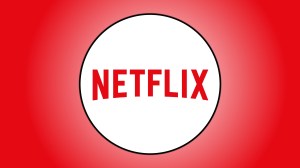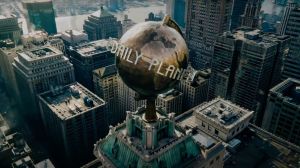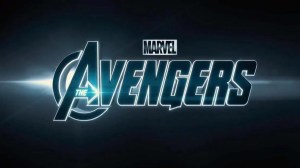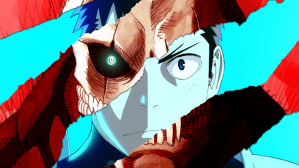With longtime editor and publisher Dan DiDio stepping away from the company, the future of DC Comics — both in the business sense and in the continuity sense — feel very much up in the air. With the long-planned and long-teased “5G” publishing initiative in its early stages, it seems that one of DiDio’s final major plans for the company he has been instrumental in shaping for 20 years, will see print in some form. With DiDio out, though, there is some doubt as to exactly what form that will take. If 5G was his “baby,” one has to wonder who will step up to parent it in his absence, and how their style may differ from DiDio’s.
Videos by ComicBook.com
There are a lot of conflicting reports as to what, exactly, 5G actually is, and if rumors are to be believed, that is in part because the plans keep changing. While DiDio seemed to have a pretty concrete sense of what he wanted to do with the big picture, few smaller details had been released publicly yet, leading to speculation among fans and the press that there was disorder and miscommunication akin to what DC experienced in the early days of their 2011 New 52 relaunch.
The 5G plan is already too far into production to fully back out of, even if for whatever reason DiDio’s successor wanted to do so. The seeds of the story were already planted in Wonder Woman‘s recent anniversary issue, which established her as the first superhero of the DC Universe (very much like in the movies). Free Comic Book Day’s Generation Zero one-shot is set to much more fully flesh out the plans, with five “generation” one-shots following shortly thereafter.
A teaser for the program, released two weeks ago, indicated that “Generation One: Age of Mysteries will witness firsthand major events from throughout the history of the DC universe as seen through the eyes of characters like Wonder Woman, Lucius Fox, Alfred Pennyworth, Green Lantern (Alan Scott), The Spectre (Jim Corrigan), Mister Terrific (Terry Sloane), and others. The series of one-shots will also expose secrets from DC’s history.” That story will be followed by one-shots titled Generation Two: Age of the Metahuman, Generation Three: Age of Crisis, Generation Four: Age of Rebirth, and Generation Five: Age of Tomorrow which, if they remain on-schedule, will be published monthly through the end of the year, with “Generation Five” touching off line-wide changes to the DC Universe in 2021.
Early rumors suggested that some of DC’s Golden Age characters would figure prominently into Generation One, while Generation Two would center on Silver Age characters and so on, through the generations of DC heroes. Generation Five would introduce a new wave of characters, and many of those new characters would take over the main line DC titles for a time. The idea would be to introduce a batch of new heroes — legacy heroes are far easier to “sell” to new readers than fully new characters are — that would bring youth and diversity to the publishing line. Later, the traditional lineup would likely be brought back with few, if any, lasting changes, but the 5G characters would give DC a new generation of characters in their toybox.
The general idea of the Generations would be to further codify a recurring editorial theme of the last 20 years at DC: that everything “counts” and that every story the publisher has ever released “matters” in the scheme of DC’s multiverse. While the pre-Crisis on Infinite Earths DC multiverse was far less concerned with precise timelines and continuities, the fact that so many stories were implicitly or explicitly removed from the canon following that ’80s event series enraged a relatively small but incredibly vocal group of fans and creators. Inconsistent implementation — some editors and creators would later say that the DC Universe should have had a hard reboot following the Crisis rather than the relatively soft one it did — haunted the timeline, too, and less than a decade after Crisis on Infinite Earths ended, DC published Zero Hour, which would try to reconcile some continuity errors and give fan-favorite characters removed from the canon a chance to make brief appearances again.
Later, writer Mark Waid would introduce the concept of Hypertime — essentially a return to the infinite multiverse, but using the terminology of “branching timelines” rather than alternate Earths — in his Kingdom Come follow-up The Kingdom. This idea would be used rarely — at least in name — but the idea of bringing back a multiverse (first limited, and later infinite) would be a recurring theme through the last 15 years of DiDio’s time at DC.
Infinite Crisis re-established a multiverse in 2005, using characters leftover from the original Crisis to do it. That series was followed up by 52, which revealed that the new multiverse was not infinite but limited to 52 worlds, many of which were depicted as popular, existing alternate timelines and some of which were undefined, so as to be saved for future stories. There was no need, as the post-Crisis, pre-Flashpoint timeline would not last long.
Flashpoint ultimately led to another (and even more ill-defined) soft reboot of the DC Universe. While the exact fate of the 52 universes was left intentionally opaque following the 2011 reboot, the 2015 story Convergence ended with the re-establishment of an infinite multiverse. The story failed to connect with the audience in the way Infinite Crisis or Flashpoint had, though, and following another (even softer) reboot in the form of the company’s 2016 “Rebirth” initiative, a new and more complicated take on the infinite multiverse — “the Metaverse” — was introduced in Geoff Johns and Gary Frank’s Watchmen sequel Doomsday Clock.
After each of these stories — The Kingdom, Infinite Crisis, Convergence, and Doomsday Clock, we get some version of “it all counts” thrown at the readers, and even the 2011 reboot handwaved a lot of reader questions about continuity by vaguely promising that all of the fans’ “favorite” stories still counted. And while Doomsday Clock did this by suggesting that the rolling timeline of the DC Universe periodically reset in response to Superman-related stimuli, it remained intentionally vague on most of the details. Still, with DiDio and Johns having said since before Doomsday Clock began that it would tie into a new status quo for the DC Universe, it’s hard to ignore the fact that it reintroduced the Justice Society of America, Golden Age heroes who had been absent since 2011, as well as several of the third- and fourth-generation legacy heroes inspired by the JSA.
A set of timelines that Dan DiDio whipped out briefly during some convention panels — but did not leave up long enough for anybody to make much sense out of — are the apparent structure of 5G, and they were certainly involved and detailed. That DC’s Editor-in-Chief Bob Harras is an old friend of Generation Zero co-writer Scott Lobdell’s from their days at Marvel together likely means that the one-shot is in as good a position as it can be to properly communicate the priorities of editorial. So while there may be some rumors of confusion behind the scenes, it appears DiDio left behind a pretty usable skeleton for publisher Jim Lee, editor Harras, and the creative teams behind to use as a guiding light if they choose to move forward with G5 in its current state.
There are certainly advantages to doing so. A new round of #1 issues headlined by new and diverse heroes with new costumes will generate a lot of buzz, a lot of sales, and a lot of controversy among old-school fans who don’t like change. Then, as DC and Marvel have done over the years in such situations, DC could make a big deal out of bringing the Old Guard back, while still keeping the supposed successors in the DCU with new identities or roles.
Doomsday Clock referenced the creation of Earth-5G in its final pages, suggesting that the 5G characters might, like the Golden Age characters were in the Silver Age, eventually be relegated to their own corner of the DC multiverse when things went back to relative normal, presumably with the most popular being carried over somehow as well. The death of Alfred Pennyworth in Batman was also apparently a key moment in the move toward 5G, and the ties between the pre-Flashpoint DC Universe and the post-Generation Zero world (in particular the return of Wally West’s kids) suggests that a full reversal of the policy would be unlikely. Whether it will be changed, or simply tightened up, in the wake of DiDio’s departure is anybody’s guess at this point.
But at least for now, it seems that fans will get a glimpse of Earth-5G by the end of the year, with big plans for 2021, lining up nicely with a number of DC movies to promote over the next 3 years. Free Comic Book Day is still far enough out to tweak the Generation Zero one shot if they want to, but at this point nothing we are hearing is that a major change is in the offing.
Still, keep your ear to the ground. Things are, if this last week has taught us anything, changing fast.









